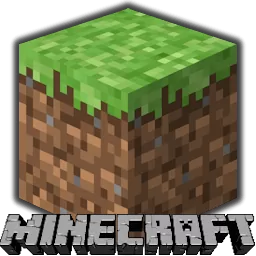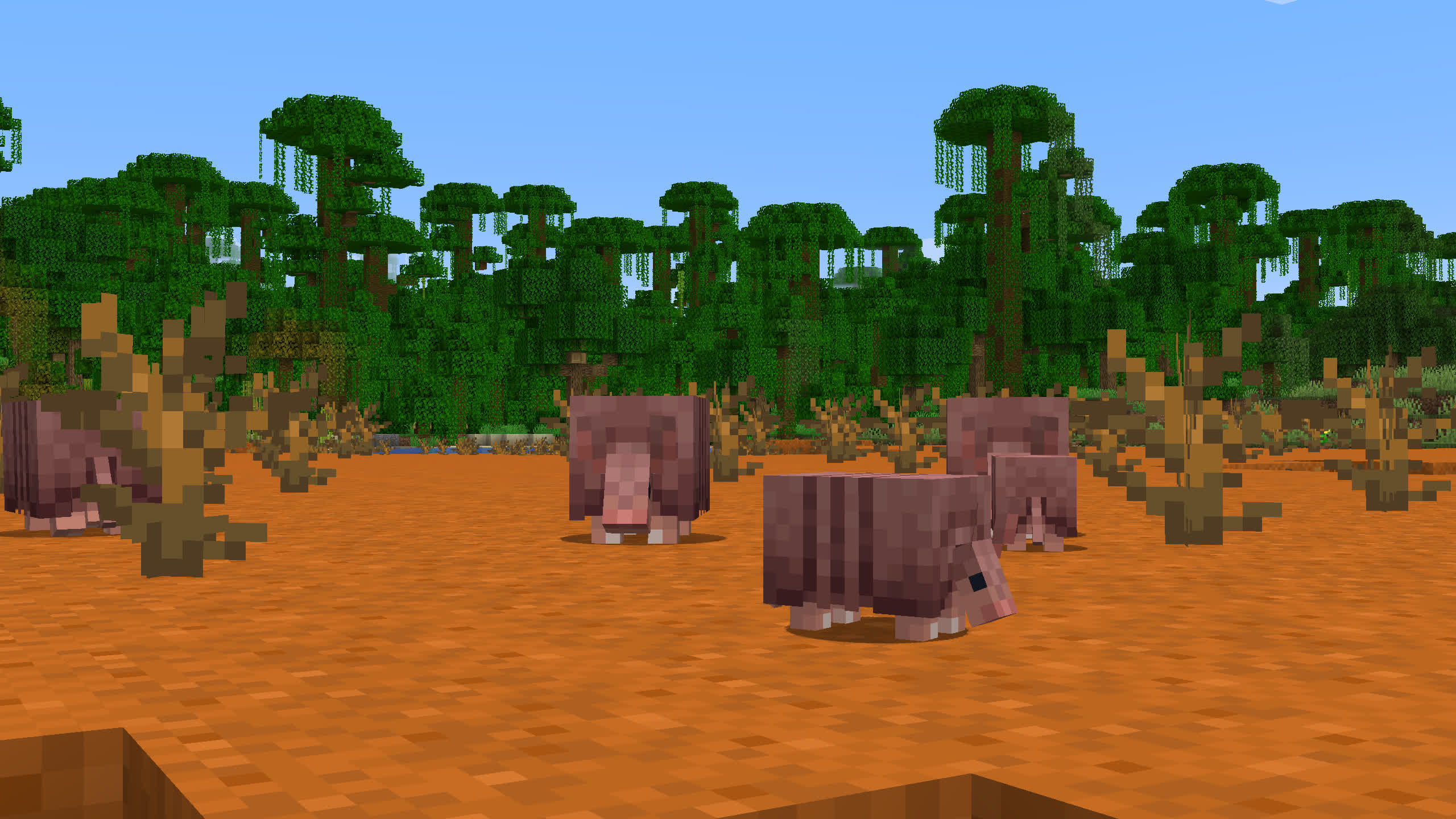Minecraft is a game about breaking and placing blocks. At first, people built structures to protect against nocturnal monsters, but as the game grew players worked together to create wonderful, imaginative things.
It can also be about adventuring with friends or watching the sunrise over a blocky ocean. It's pretty. Brave players battle terrible things in The Nether, which is more scary than pretty. You can also visit a land of mushrooms if it sounds more like your cup of tea.
How do I update Minecraft?
Open the Minecraft Launcher. Click on "Options," next to the username text box, then press "Force update!" and login with your Minecraft credentials afterwards. Minecraft will start updating itself. This can also be used to get a fresh Minecraft installation, which will keep your saved games and texture packs, but not your mods.
What is the difference between Minecraft Java Edition and Minecraft Bedrock Edition?
Java is, by and large, the more powerful and feature-rich version of Minecraft, but it lacks the compatibility and cross-play support of Bedrock. Furthermore, Bedrock Edition comes packaged with microtransactions, RTX support, and a handful of other exclusive functions (not to mention a broader set of supported devices).
Java Edition is PC only and players can only interact with other Java Edition players. Meanwhile, Bedrock Edition is multi-platform which means Bedrock players can interact with each other be it console, mobile or PC.
Gamers on the Java Edition have access to numerous communities and endless mods. These two combined make the multiplayer experience of the game a lot more malleable. The biggest con for Java Edition is that it requires higher spec machines to run smoothly.
Bedrock Edition does offer a few things that the Java Edition does not have. Mainly its marketplace, where you can acquire skins and add-ons, and the option to use controllers. Parental controls via Xbox services also provide peace of mind to parents.
How do I find other Minecraft players online?
To play Minecraft with other players, find a server first. Different servers offer different gameplay. Some are centered around building, others offer an MMO experience, and others are centered around survival.
There is a universe of possibilities, so your best bet is use any search engine to find Minecraft servers with the kind of gameplay style you're looking for. Such is the diversity that if you're looking for gameplay similar to GTA all you have to do is search "Grand Theft Auto Minecraft servers'' to get a list of options. Once you have found a server, open Minecraft, select Multiplayer, and choose "Add Server."
Note: To play Minecraft Java Edition please download and install Java first. (Minecraft 1.19+ requires Java 17)
What's New
Do you smell that? Ah yes, it's the magical, tell-tale scent of release day Tuesday - and what a release day it is!
Today we are shipping Minecraft: Java Edition 1.20.5, also known as the Armored Paws drop! Travel to the Savanna and Badlands biomes and say hello to the endearing Armadillos. Find and befriend eight new Wolf variants and equip your canine companions with dyable armor made from Armadillo Scutes and go adventuring together!
On the technical side, the Armored Paws drop is also introducing a change to how Java Edition spawn chunks work, the details of which we covered in the changelog for Snapshot 24w03a earlier this year. The tl;dr version of this change is that we're making the spawn chunk radius a configurable game rule and decreasing the default value by 98%. This should translate to a noticeable performance boost for most players!
So what are you waiting for? Stock up on food and water and start reading through the complete 1.20.5 changelog below. It's a looong one.
Happy scute brushing!
New Features
- Added Armadillo and Armadillo Scutes
- Added Wolf Armor
- Added Wolf variants
Armadillo
- The Armadillo is a new passive mob
- Armadillos drop Armadillo Scutes periodically, and when brushed
- Armadillos spawn in Savannas and Badlands
- The Armadillo's favorite food is the Spider Eye
- Armadillos are tempted by Spider Eyes
- Feeding two adult Armadillos Spider Eyes makes them breed
- Feeding a baby Armadillo a Spider Eye makes it grow up quicker
- The Armadillo rolls up when it detects a threat such as:
- A player sprinting, riding a mount, or riding a vehicle
- Undead mobs
- A mob or a player it has recently been attacked by
- The Armadillo does not roll up when:
- Fleeing, in water, in the air, or when on a Lead
- When an Armadillo is rolled up:
- It does not walk, cannot eat, and will not be tempted by food
- Its shell will protect it, reducing damage taken, even allowing it to fully resist weak attacks
- It will continue to scan for threats, occasionally peeking to check the surroundings
- If no threats are detected for 4 seconds, it will unroll
- Spiders and Cave Spiders will run away from Armadillos that are not in a rolled up state
Armadillo Scutes
- Armadillo Scutes are dropped by Armadillos periodically or when an Armadillo is brushed
- Armadillo Scutes can be used to craft Wolf Armor
- Dispensers can be used to brush Armadillo Scutes off Armadillos
Wolf Armor
- Wolf Armor can be crafted with Armadillo Scutes and can be dyed in a similar fashion to Leather Armor
- The Wolf Armor will protect the Wolf from most damage sources until the armor loses all durability and breaks
- Wolf Armor shows signs of breakage as durability goes down
- Using Armadillo Scutes on the Wolf Armor while it is equipped on the Wolf will repair it
- Using Shears on a Wolf that is wearing armor will drop the armor
- Wolf Armor can only be equipped on a tame adult Wolf
- Only the Wolf's owner can equip, repair, and shear Wolf Armor
- Dispensers cannot equip nor remove Wolf Armor
Wolf Variants
New Wolf variants have been added. The variant is determined by the biome they spawn in. Wolves spawn in packs, with a default pack size of 4.
- Pale Wolf - The Wolf we're all familiar with. This variant spawns in the Taiga biome
- Woods Wolf - A variant that spawns in the Forest biome. This will be the dominant Wolf variant that you will be able to find in the Overworld, since the Forest biome is very common
- Ashen Wolf - A variant that spawns in the Snowy Taiga biome
- Black Wolf - A variant that spawns in the Old Growth Pine Taiga biome, in smaller packs of 2-4
- Chestnut Wolf - A variant that spawns in the Old Growth Spruce Taiga biome, in smaller packs of 2-4
- Rusty Wolf - A variant that spawns in a new location for Wolves - the Sparse Jungle biome, in smaller packs of 2-4
- Spotted Wolf - A variant that spawns in a new location for Wolves - the Savanna Plateau biome, in larger packs of 4-8
- Striped Wolf - A variant that spawns in a new location for Wolves - the Wooded Badlands biome, in larger packs of 4-8
- Snowy Wolf - A variant that spawns in the Grove biome. This lone Wolf is a rare type, as it always walks alone
- When summoned in other ways (e.g. using the Spawn Egg or using the summon command), the variant selection follows the natural spawning biome rules with the following extensions:
- Rusty Wolf: will be selected in all Jungle-like biomes, including Jungle and Bamboo Jungle Biomes
- Spotted Wolf: will be selected in all Savanna-like biomes, including Savanna and Windswept Savanna Biomes
- Striped Wolf: will be selected in all Badlands-like biomes, including Badlands and Eroded Badlands Biomes
Changes
- The UI has been updated with a fresher look
- Decreased the default size of the spawn chunks and made the value configurable
- Updated the health and damage dealt by Tamed Wolves
- Adjusted spawning conditions for Wolves, allowing them to spawn on Coarse Dirt and Podzol blocks
- Adjusted the texture of the Wolf Collar layer to be more consistent with the new Wolf Armor
- Adjusted passive mobs spawning in Grove biome to only include Rabbits, Foxes and Wolves
- Minor tweaks to existing Blocks, Items and Entities
- Added option to use Japanese variants of CJK characters
- Added support for Viossa language
- When entities leave or enter The End, the area they arrive in will now stay loaded for 15 seconds, matching the behavior of Nether Portals
- Improvements to the Game's Performance
- Improved handling of errors during saving and loading
UI Updates
- The UI has been updated to sport a fresher look and to be more consistent when it comes to the layout of different UI elements, all while retaining the essence and feel of the old screens.
- The menu background dirt texture has been replaced by a darkened background
- The dirt background can be restored by using the built-in Programmer Art Resource Pack
- Outside the game, the main menu panorama is displayed behind all screens
- In the game, the world will be visible behind all screens
- Paired with the darkened background is a blur
- The strength of the blur can be configured in Video Settings and Accessibility Settings
- In-game screens such as containers and books are not affected by these changes
- Screen elements such as titles and buttons are positioned more consistently across different screens
- The World Backups screen and the Players screen in the Realms menu have been updated
- Lists now have clearer borders at the top and bottom
- Button tooltips will no longer appear when hovering outside the containing element
- After defeating the Ender Dragon and entering the End Portal, the End Poem and credits are now displayed with a background based on the animated End Portal effect
- The animated Nether Portal texture is displayed when changing dimension to or from The Nether
- The animated End Portal effect is displayed when changing dimension to or from The End





